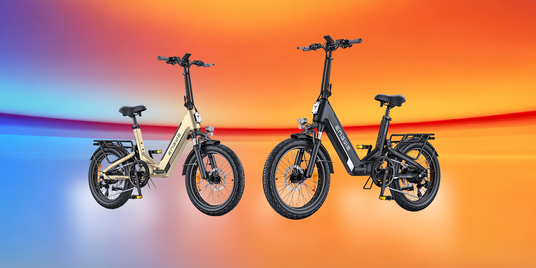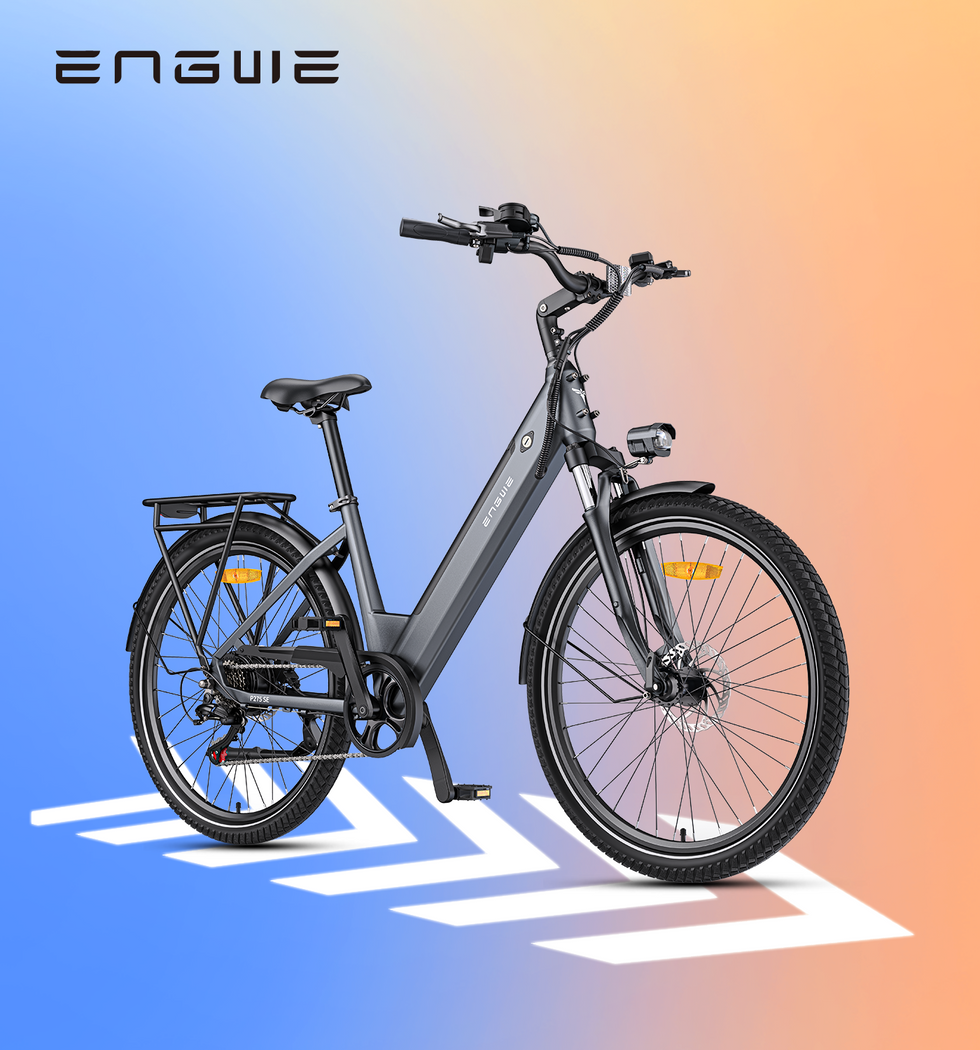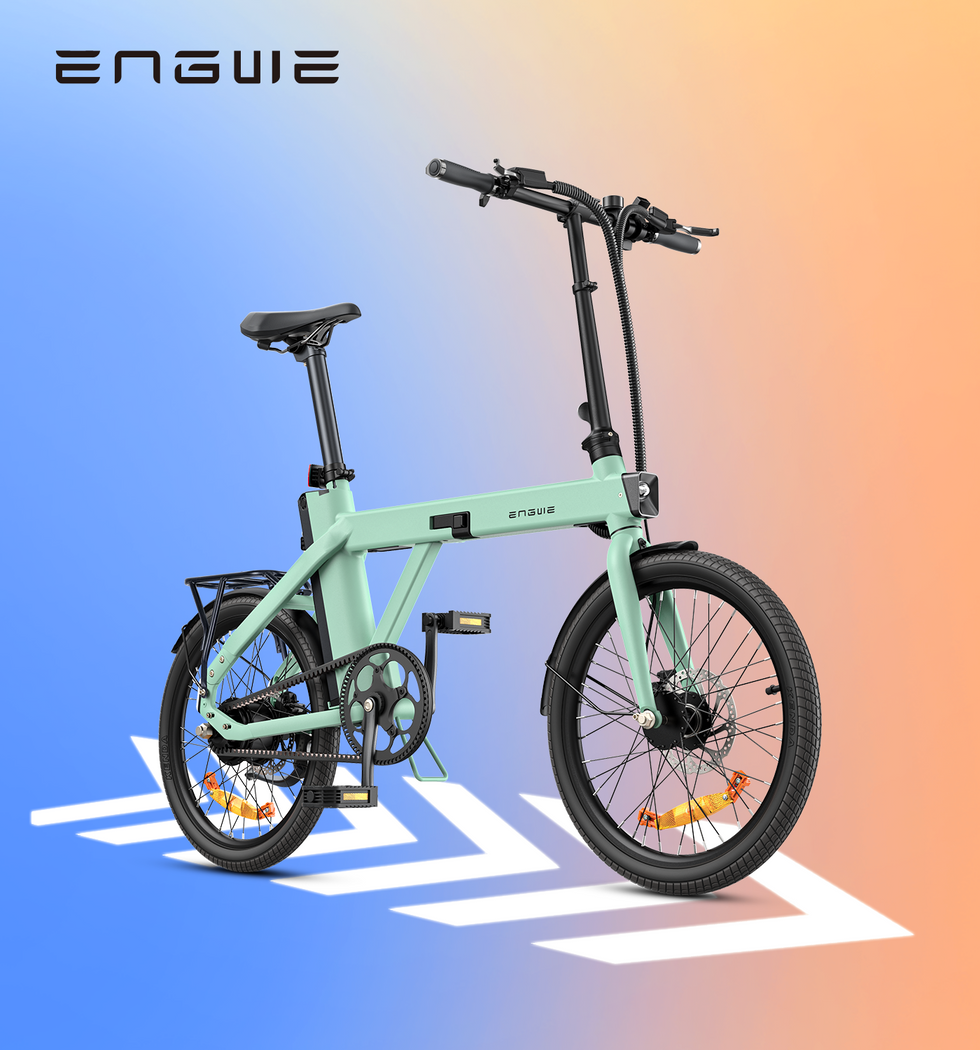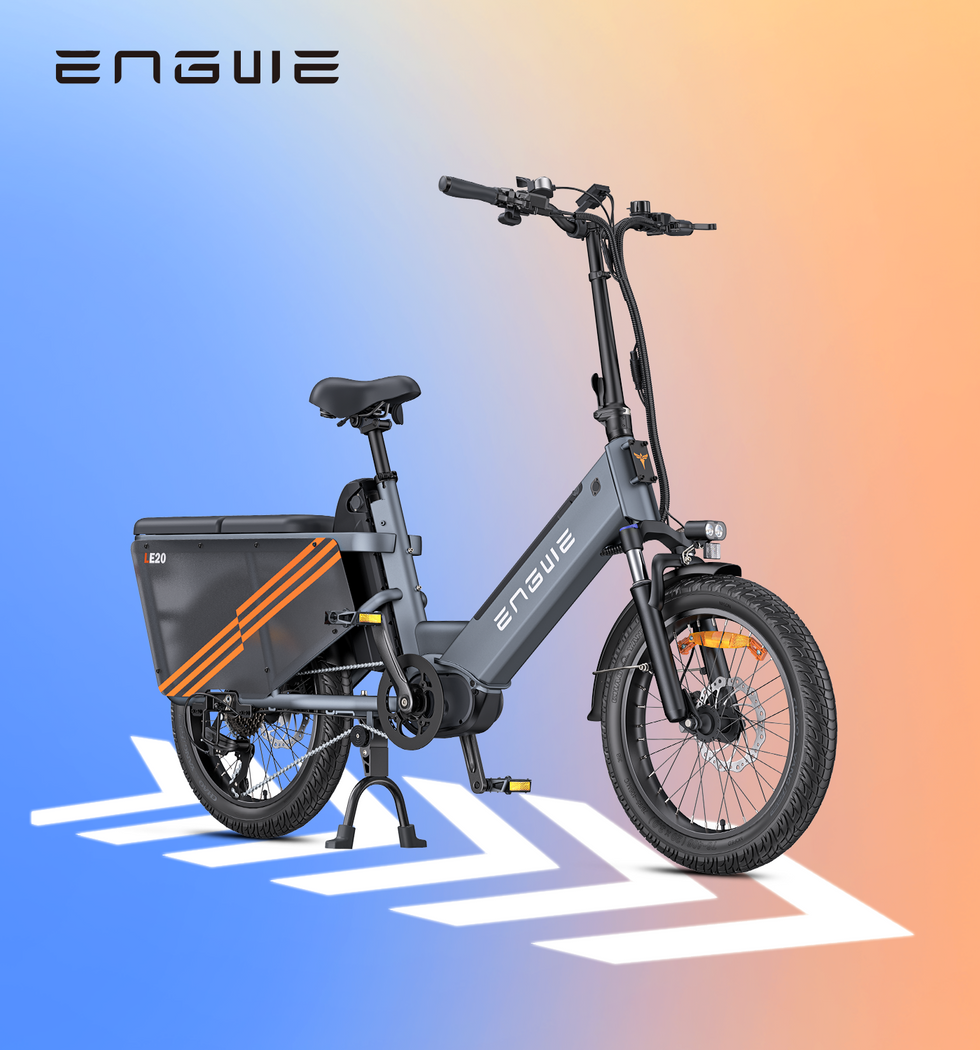The daily commute. For most people, it’s a stress, an expense, and a waste of time. Whether that daily schlep amounts to a traffic-plagued commute, uncomfortable train or bus rides, or the sheer cost of it all, getting to work and back home is often the worst part of the day. But should it not be the best? More than just a bike with a motor, the e-bike is a transformative tool for the modern commute. It offers a faster, cheaper, greener and much more enjoyable means of travel. But the question is cutting through the noise. With such a smorgasbord to choose from, what is the ‘best’ commuter e-bike, anyway? It’s not about the strongest motor or the largest battery. It is about finding a trustworthy companion for your everyday ride, that Red Dot Award-winning bicycle that effortlessly fits into your life and sorts out the real-life challenges you meet on a daily basis.
This guide is built from the ground up to solve your problems, and all the problems that you don’t know you have yet. We’ll dissect what’s important for a commuter, peel back the veil on the tech that really makes a difference, and point you toward our favorite machines for making the best of your commute. Before we get into the details, let’s talk about what the commuter e-bike aims to fix.
| Commuter’s Dilemma | How the Right Ebike Solves It |
|---|---|
| Getting to work sweating and needing a shower. | The electric assist provides assistance pedalling, particularly when going up hills and into headwinds. You can pick how hard you want to work, and arrive refreshed and ready to tackle the day. |
| The trip is too long or hilly for a conventional bike. | The motor/battery combo handles 10-20 miles with very little effort, flattening out hills and turning a punishing ride into a pleasant one. |
| Traffic jams can be unpredictable and journey times cannot be relied upon. | However, e-bikes can use cycle lanes and can filter through static traffic, providing you with an incredibly predictable travel time. |
| Fuel, parking, or public transport is too expensive. | After the initial cost, electric bikes are very cheap to run. It is pence in the battery fill-up. |
| Perfect for carrying laptop, change of clothes, shopping, etc. | A true commuter e-bike comes with, or has mounts to fit, a pannier rack and panniers to carry your stuff securely, in a balanced way that doesn’t strain your back. |
| Concerns regarding safety and visibility in city traffic. | Being upright on the bike both improves your view of the road and also helps drivers see you, and with integrated lights and powerful hydraulic brakes, it’s a machine to make you feel safe around town. |
| Environmental impact of driving a car for short distances. | An e-bike is a zero-emission way to get around as well as a fun and efficient way to get some exercise and reduce your carbon footprint on your commute. |
The Ride at the Heart of It: Motor and Sensor Explained
When shopping for an electric bike, one of the first things you’ll notice is the presence of motor and battery ratings. The secret for commuting isn’t raw power; it’s how that power is delivered. Road-legal e-bikes in the UK are restricted to a motor of 250 W and a maximum speed of 25 km/h (15.5 mph). That's plenty for city life. The real differentiator, and really the secret to a premium-feeling ride, is the sensor.
The vast majority of e-bikes at the entry level use a cadence sensor. This operates like an on/off switch: as soon as you start to pedal the motor will kick in at a predetermined level of power. It feels like you’re being pushed. But, for a completely intuitive and controlled ride, a torque sensor is far better. A torque sensor also determines how hard you are pushing down through the pedals, and then doles out that same scale of assistance. So if you press lightly, it gives you a light push. You get more power if you stomp hard to accelerate from a stoplight or push up a hill. What you get is a ride that simply feels natural — so natural you might think your legs are super-human. It’s much smoother and more battery efficient, and it gives you much greater control in stop-start traffic, which is perfect for commuting.
Textbook Commuter-Oriented Design
Locating a bike that doesn't require lots of aftermarket upgrades to gather all the perfect features and components together is seriously tough, but some companies just nail it. The ENGWE P275 SE is a great specimen of a city commuter purpose-made electric bicycle. A unique feature is the ultra-responsive torque sensor, which when coupled with a smart algorithm ensures power is cut at a near-instant rate and feels completely intuitive, natural and almost like an extension of your own input. This negates the jerky, unnatural nature of over-stiffness found in other bikes. Power is provided by a proven, and legal, 250W brushless motor that offers generous assistance on those city inclines. ‘Range anxiety’ doesn’t figure here, with a high-capacity 36V, 13Ah battery, which can travel up to an impressive 100km in assisted riding and – for most people at least – is more than sufficient for a week’s worth of getting around and commuting. The battery also tucks neatly away into the 6061 aluminum alloy frame and is easily removable; you can either charge it at your desk or in your home. When you are riding in heavily congested urban traffic, safety and control are of the essence, and the P275 SE delivers, with its 160mm front and rear hydraulic disc brakes delivering uncompromising stopping power, rain or shine. Comfort is also a factor, thanks to a Dutch-style upright riding position, ergonomic saddle and adjustable stem to get you to your destination relaxed. Practicality is part and parcel with a Shimano 7-speed drivetrain, city-focused 27.5-inch tyres and front and rear mudguards all included, ready to keep you clean in all weather conditions. It's the perfect innovative and comprehensive product for today's commuter.

Battery, Brakes, and Built-in Practicality
There are a number of other requirements for a solid commuter bike beyond the motor. The battery range is crucial. Check the Watt-hour (Wh) rating; a higher one will generally mean a longer driving range. The manufacturer's listed max range is going to be based on perfect conditions (flat ground, lowest assist level, light rider) though. For a safe estimate, assume 60-70% of the quoted maximum. A removable battery is also a necessity for most commuters — and allows you to take the battery inside for charging, instead of having to carry the entire bike.
Your brakes are your single most important safety feature. Although mechanical disc brakes are OK, and we ride them, hydraulic disc brakes are notably better. They offer more stopping power with less effort at the lever and are self-adjusting as the pads wear. Especially in a British city where the road is usually wet and often unpredictable, the confidence and control hydraulic brakes give you is worth its weight in gold.
Finally, consider the practical elements. For commuting, a bike would have to come with full-length mudguards (or, at least, mounts for them) and a rear pannier rack. Mudguards are imperative. A pannier rack enables you to attach pannier bags to your bike and carry all of your gear; this is preferable to riding with a pack. Another great feature is integrated lights which draw power from the main battery so they’re never an issue to worry about being charged or stolen. Again, a straighter, more comfortable riding position is better suited to commuting because it offers better visibility of the traffic around you.

Understanding UK E-Bike Regulations
It is important to note that for an e-bike to be legal on UK roads without the need for tax, insurance or a licence it must meet the regulations known in the UK as 'Electrically Assisted Pedal Cycles' (EAPC). This is simple to remember:
- The vehicle shall be equipped with a system that allows the engine to propel the bike.
- The motor of the bike may not have continuous power of more than 250 watts.
- The electric assistance needs to stop when the bike hits 15.5mph (25km/h).
Any e-bike that doesn’t conform to this definition (for example, one that has a more powerful motor as well as a ‘twist and go’ throttle that functions above 4 mph) is legally defined as a moped and must be registered (even if it’s not being used on the road), taxed and insured. A good manufacturer selling in the UK will make sure their bikes are fully EAPC compliant so that they can actually be used on the road, but do check.

Frequently Asked Questions for Commuters
1. How much maintenance goes into a commuter electric bike?
A regular bike also needs just as much regular maintenance as an electric bike: keeping the tyres up, oiling the chain, checking the brakes. The electrical parts of the machine are also very durable. The big one is battery management: Try not to store it fully empty or fully charged for long periods, and keep it at room temperature when you can. An annual fettling at a decent bike shop will check all mechanical and electrical components.
2. Is it actually possible to ride an electric bike in the rain?
Yes, absolutely. Since you mentioned that you’d be commuting, the commuter-style e-bikes are purpose-built to be ridden in all weather. Seek out ones with an IP (Ingress Protection) rating (like IPX4 or IP54) that means they can handle getting water splashed on from any direction. Mudguards, as stated, are a bit of a no-brainer when it comes to rider comfort. The other thing to bear in mind is that on wet roads, stopping distances are longer, so it's another reason to go with some serious hydraulic disc brakes.
3. Do I have to be licensed, insure my vehicle or wear a helmet?
If your e-bike conforms to the above EAPC regulations, you don't require a licence, registration or insurance to ride it on UK roads. It is rideable wherever a regular bicycle is accepted. Statistically, it is a bad idea not to wear a helmet, even if helmets are not law for adults in the UK – though you should wear a lid (helmet) out of self-preservation in traffic.
4. What range will I actually get when the battery is fully charged?
That is the most common question, and the answer is “it depends.” The maximum stated range is a best-case optimistic outlook. Your range will be influenced by your weight, the amount of hills on your route, the temperature (batteries don’t like the cold), how much luggage you carry, and most importantly the level of power assistance you use. Just know that if you have yours set to the strongest strength while you're out there, your range will not be anywhere near as far as promised. A decent rule of thumb would be to expect around two-thirds of the optimistically-touted maximum range for mixed, real-world riding.
5. Are step-through frames not as strong or only for women?
This is a common misconception. These days, step-through frames are designed to be as sturdy as any step-over frame. They are not gender-specific. Hop on a bike with a step-through frame for a smooth ride to work. It's easier to get on and off the bike, especially if you're wearing formal trousers or a skirt, or if the bike's loaded with pannier bags. It provides a more laidback and ergonomic riding experience for all in stop-start city conditions.
The right electric bike turns your mundane commute into the best part of your day.



